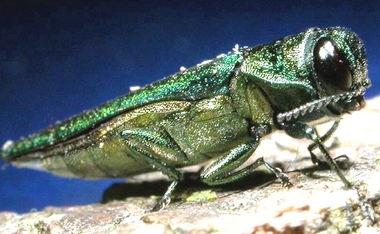Subscriptions
Menu
Advertisements
A little bug doing very bad things
10/5/2010 |

A very small insect may have a very large economic impact on landowners in Schoharie County and New York State.
At a recent training, the Schoharie County Soil and Water Conservation District learned of the approaching insect and staff is suggesting that woodlot owners especially, take appropriate action.
The emerald ash borer (EAB) has caused 100 percent death rates in ash trees near Detroit, Michigan where it was discovered in 2002.
Since that time the borer has made its way to many other states, including New York.
Most recently in July, it was discovered in the Catskill Forest, just south of Schoharie County. In counties where the ash borer has been identified, the New York DEC has initiated a Do Not Move Firewood program.
Where firewood cannot be moved more than 50 miles from its source, and limits the import of firewood into New York unless it has been heat treated to kill EAB.
Currently there is no area-wide control for this pest.
Baseball bat and tool handle manufacturers will be severely impacted by quarantine regulations and the potential complete loss of ash in the future.
The Schoharie SWCD is suggesting the same recommendations as Cornell University, including the following:
• Do not move firewood more than 50 miles from its source.
• Early detection and rapid response are key to slowing the spread and minimizing the impact. Ash trees when cut should be inspected for signs of EAB.
If detected, notify NYS DEC immediately or take samples to Cooperative Extension or the SWCD for identification.
• Cooperate with federal and state authorities if it is located in your area.
• The use of pesticide is not necessary until the EAB is confirmed as present 10 to 15 miles away.
• Liquidating ash in private forest lands should not be the first and only management consideration.
In advance of EAB wood landowners should:
• Start now to consider management objectives with a qualified forester.
• Inventory the forest to determine the quality of forest resources.
• Develop plans for action and regularly survey for EAB.
• Participate in local educational trainings made available.
For additional resources, including photos, visit: www.emeraldashborer.info or www.nyis.info.
If you think you have detected the emerald ash borer, contact one of the following: Schoharie SWCD –234-4092, NYS DEC Regional office at (607) 652-7365 or USDA Forest Service at 1-(866)-322-4512.









